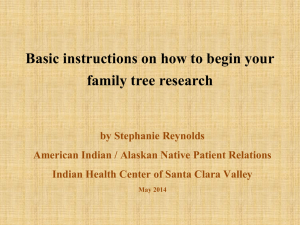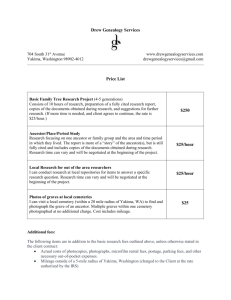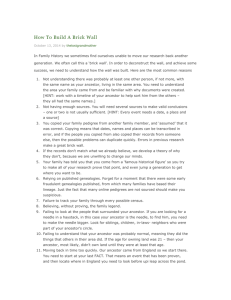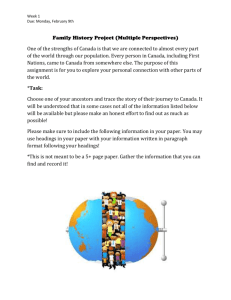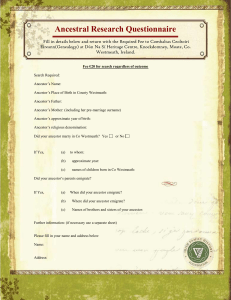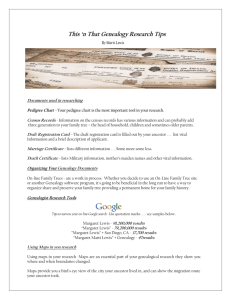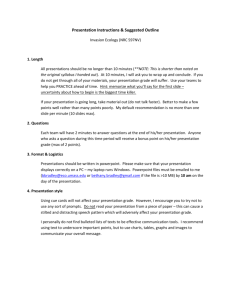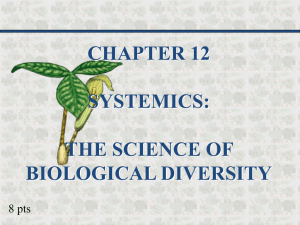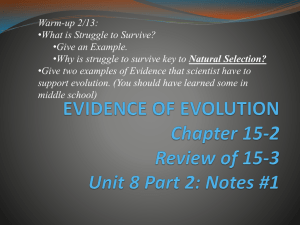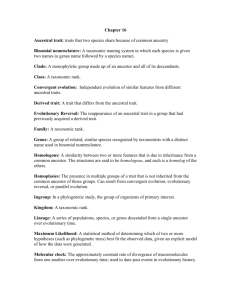Plant Taxonomy: Classification & Systems
advertisement
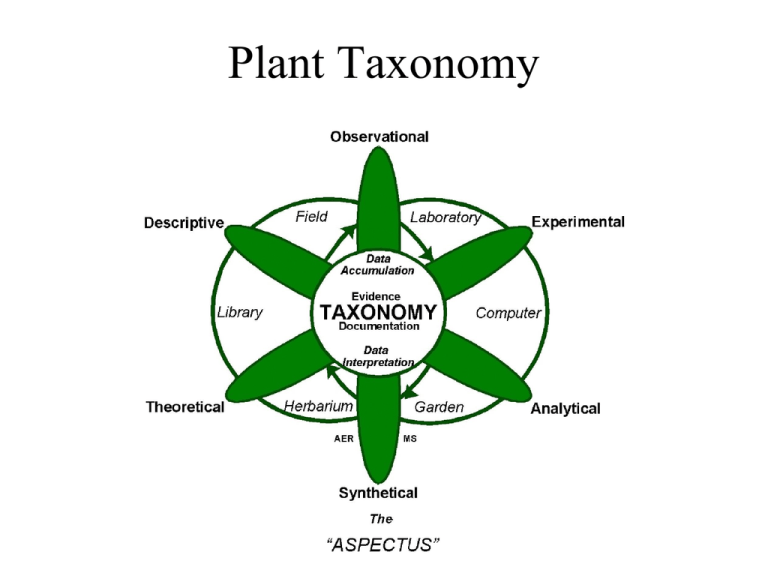
Plant Taxonomy Taxonomic Systems • Predicitivity - Ideally our systems of classification should allow us to place similar species of plants together in the same category Two Types of Classification Schemes • Artificial classification schemes - these systems allow one to quickly categorize a particular organism, usually so that it can be quickly found in a book, a garden or an herbarium • Natural classification scheme - organize together related groups of plants and have a high degree of predictive power Artificial Classification Scheme Red Trillium Natural Classification Scheme – For Seed Plants Ancient Classifications Pennisetum – a grass - Poaceae Carex – sedge meadow - Cyperaceae Carex Flowers Cyperaceae Juncus – rushes - Juncacaea Vegetables from Brassica oleracea Brassicaceae Theophrastus 370-285 BCE Dioscorides – 1st Century AD Page from 15th century Arabic edition of Dioscorides herbal Leonhart Fuchs - 1542 Fuchs’s History of Plants - 1542 Gerard’s Herbal 1597 Cesalpino - De Plantis 1583 Gaspar Bauhin - 1623 1623 – first use of binomial names John Ray – Catalog 1688 John Ray’s Catalog of English Plants Carolus Linneaus Systema Naturae – first published 1735 Genera Plantarum – 1737 – Linneaus’s copy with notes Species Plantarum - 1753 Linneaus - Artificial Classification Scheme A. P. de Candolle - 1813 De Candolle – Flore Francaise Classification After Darwin Ideal Classification Scheme • Ideally we would construct a classification scheme which progresses from primitive or ancestral traits to advanced or derived traits • Ideally each taxon would be monophyletic - arisen by diversification from a single ancestor – the Plant Kingdom – whether the Embrophytes (land plants) or Viridiplantae (green algae plus land plants) • In contrast polyphyletic groups have arisen from more than one ancestor - the Protista • A paraphyletic group is one in which all members possess a single ancestor in common, but which does not constitute all descendents of that ancestor - the Dicots Developing Classification Systems • In developing classification systems, we attempt to group plants which share derived characteristics - presumably these characters have only arisen once or at most a few times - it is not always easy to tell what is a derived character though • Derived characters may arise independently in different groups of plants through convergent evolution or parallel evolution • convergent - unrelated plants develop similar characteristics due to common environment • parallel - plants with common ancestor develop similar characteristics even though the ancestor did not have that characteristic Adolf Engler - 1887 Elymus (rye) flowers - Poaceae Charles Bessey - 1911 Magnolia grandifolia Magnoliaceae Arthur J. Cronquist - 1981 The figure above (redrawn from Cronquist, 1988, fig. 6.1) depicts phyletic relationships among subclasses of the Class Magnoliopsida, as envisioned by Cronquist. This alignment features the Magnoliidae as including extant dicot elements that carry the greatest number of archaic features (similar to the 'original' flowering plant) and the Asteridae (Sunflowers and relatives) as the most 'derived' or specialized element of the Class. The size of the 'balloons' is roughly proportional to the number of species per subclass. Basics of Characters • A taxonomic character is any expressed attribute of an organism that can be evaluated and that has two or more discontinuous states or conditions for example the number of petals on a flower - can be in 3's, 4's or 5's - thus distinct states and they are discontinuous • The taxonomic value of a characteristic is increased if the biological significance of the characteristic has been determined Usefulness of Characters • Different characteristics have differing degrees of utility in terms of classification - a uniform characteristic may be very good at demonstrating cohesion or relatedness at a higher level of classification such as the family • Conversely, some characters which have a great deal of variability may be of little value in differentiating higher orders of classification, such as family, but may be very valuable in differentiating lower taxonomic groups such as the genus or species Goat Dandelion - Asteraceae Buttercup - Ranunculaceae Morphology • Plants are highly plastic in their growth forms how tall they grow, their shape will vary depending upon environment and growing conditions • However reproductive structures tend not to differ in form from plant to plant of the same species they may differ in number, but form is conservative - flowers, cones tend to be similar within all members of a species - thus much plant classification and identification is based upon reproductive structures Umbel – flower head in Apiaceae White Pasque Flower Ranunculaceae American Licorice Mint Chickweed - Caryophyllaceae Oak acorns - Fagaceae Birch catkin Betulaceae
